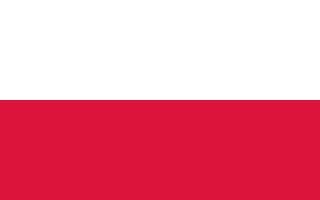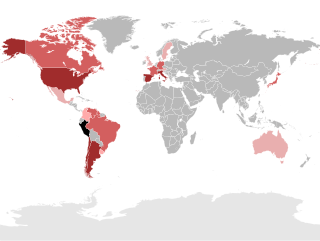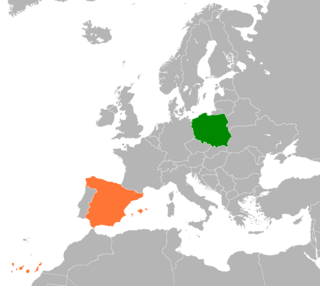
As of 7 November 2024, Spain had a total population of 48,946,035 The modern Kingdom of Spain arose from the accretion of several independent Iberian realms, including the Kingdoms of León, Castile, Navarre, the Crown of Aragon and Granada, all of which, together with the modern state of Portugal, were successor states to the late antique Christian Visigothic Kingdom after the Reconquista.

Chile's 2017 census reported a population of 17,574,003 people. Its rate of population growth has been decreasing since 1990, due to a declining birth rate. By 2050 the population is expected to reach approximately 20.2 million people, at which point it is projected to either stagnate or begin declining. About 85% of the country's population lives in urban areas, with 40% living in Greater Santiago alone. The largest agglomerations according to the 2002 census are Greater Santiago with 5.6 million people, Greater Concepción with 861,000 and Greater Valparaíso with 824,000.

Polish people, or Poles, are a West Slavic ethnic group and nation who share a common history, culture, the Polish language and are identified with the country of Poland in Central Europe. The preamble to the Constitution of the Republic of Poland defines the Polish nation as comprising all the citizens of Poland, regardless of heritage or ethnicity. The majority of Poles adhere to Roman Catholicism.

The Polish diaspora comprises Poles and people of Polish heritage or origin who live outside Poland. The Polish diaspora is also known in modern Polish as Polonia, the name for Poland in Latin and many Romance languages.

The history of immigration to Argentina can be divided into several major stages:

Peruvians are the citizens of Peru. What is now Peru has been inhabited for several millennia by cultures such as the Caral before the Spanish conquest in the 16th century. Peruvian population decreased from an estimated 5–9 million in the 1520s to around 600,000 in 1620 mainly because of infectious diseases carried by the Spanish. Spaniards and Africans arrived in large numbers in 1532 under colonial rule, mixing widely with each other and with Native Peruvians. During the Republic, there has been a gradual immigration of European people. Chinese and Japanese arrived in large numbers at the end of the 19th century.

Immigration to Spain increased significantly in the beginning of the 21st century. In 1998, immigrants accounted for 1.6% of the population, and by 2009, that number had risen to over 12%. Until 2014, the numbers were decreasing due to the economic crisis, but since 2015, immigration to Spain has increased again, especially after 2021.

The Polish minority in Ukraine officially numbers about 144,130, of whom 21,094 (14.6%) speak Polish as their first language. The history of Polish settlement in current territory of Ukraine dates back to 1030–31. In Late Middle Ages, following the extinction of the Rurik dynasty in 1323, the Kingdom of Poland extended east in 1340 to include the lands of Przemyśl and in 1366, Kamianets-Podilskyi. The settlement of Poles became common there after the Polish–Lithuanian peace treaty signed in 1366 between Casimir III the Great of Poland, and Liubartas of Lithuania.
European Peruvians, also known as White Peruvians, are Peruvians who have predominantly or total European ancestry. Traditionally, this group had been more dominant in the political, commercial, and diplomatic sectors of Peruvian society. According to the most recent 2017 census where ethnic self-identification was used, it makes up about 5.9% of the total population aged 12 years and above of Peru.
Turks in Spain, or Spanish Turks, refers to ethnic Turks who have emigrated to Spain as well as the growing Spanish-born community with full or partial Turkish origins. The Turkish Spanish community includes descendants who originate from the Republic of Turkey as well as other post-Ottoman modern nation-states, especially ethnic Turkish communities from the Balkans, and to a lesser extent from the island of Cyprus, and other parts of the Levant.
Iranians in Spain have a history going back for over a millennium and form a minor population in modern day. They are a part of the Iranian diaspora.
Mexican immigration to Spain refers to the Mexican population in Spain and their Spanish-born descendants. The Mexicans living in Spain are composed primarily of students, skilled professionals, spouses of Spaniards, as well as Mexican citizens who also have Spanish nationality. In December 2008, the National Statistics Institute in Spain had 14,399 registered Mexicans within its territory, of which 7,210 hold other nationalities of the European Union or are family members of EU citizens. To this number must be added those with dual nationality, who are not in Spanish records as foreigners. Mexican and Spanish laws allow dual citizenship, and many Mexicans who have asked for it, whether they are residents in Spain as grandchildren or they are children of Spanish migrants to Mexico. In 2010, the Ministry of Foreign Affairs of Mexico recorded 21,107 Mexicans living in Spain, who became the third largest Mexican community residing abroad, after the United States and Canada; and the largest Mexican community in Europe.

Uruguayans are people identified with the country of Uruguay, through citizenship or descent. Uruguay is home to people of different ethnic origins. As a result, many Uruguayans do not equate their nationality with ethnicity, but with citizenship and their allegiance to Uruguay. Colloquially, primarily among other Spanish-speaking Latin American nations, Uruguayans are also referred to as "orientals [as in Easterners]".
Polish Venezuelans are Venezuelan citizens of full or partial Polish ancestry. The Polish colony in Venezuela is well dispersed throughout the country, but most of the Poles and their descendants live in big cities like Caracas, Maracaibo and Valencia.

Poland–Spain relations are cultural and political relations between Poland and Spain. Both nations are members of NATO, the European Union, OECD, OSCE, the Council of Europe and the United Nations. Spain has given full support to Poland's membership in the European Union and NATO.
Venezuelans form one of the main immigrant groups in Spain, which is also the European country to which most Venezuelans choose to migrate because of shared language, customs and family ties. Similarly to nationals from other countries of Ibero-America, Venezuelans of origin are allowed to apply for dual Spanish citizenship after two years of legal residence in Spain. In addition, Venezuelans who are children or grandchildren of Spanish citizens can legally obtain Spanish citizenship from their countries of origin, an option open to over 3 million Venezuelans.

Argentines in Spain are the largest community of Argentines abroad. In Spain, they represent one of the largest immigrant groups in the country.
The Albanians in Spain are people of full or partial Albanian ancestry and heritage in Spain. They trace their ancestry to the territories with a large Albanian population in the Balkans among others to Albania, Greece, Kosovo as well as to Italy.

Polish Colombians are Colombian citizens of full or partial Polish ancestry, or Polish-born person residing in Colombia. Most of the Polish immigrants that fled from the Holocaust to Colombia were Polish Jews.
Italians in Spain are one the largest communities of immigrant groups in Spain, with 260,000 Italian citizens in the country, of which 143,000 were born in Italy.










